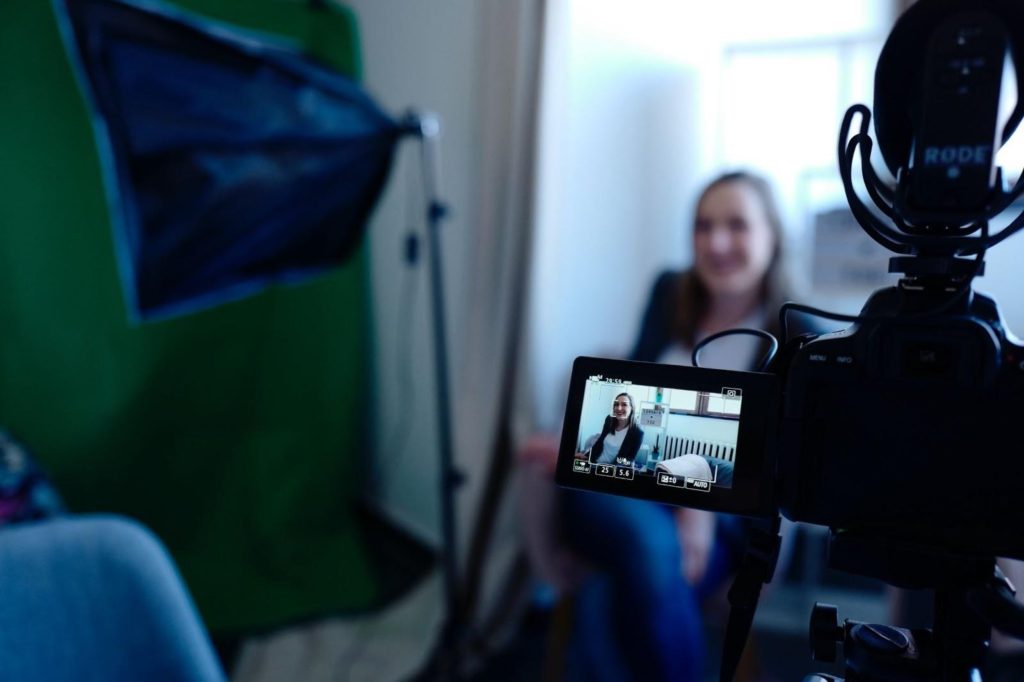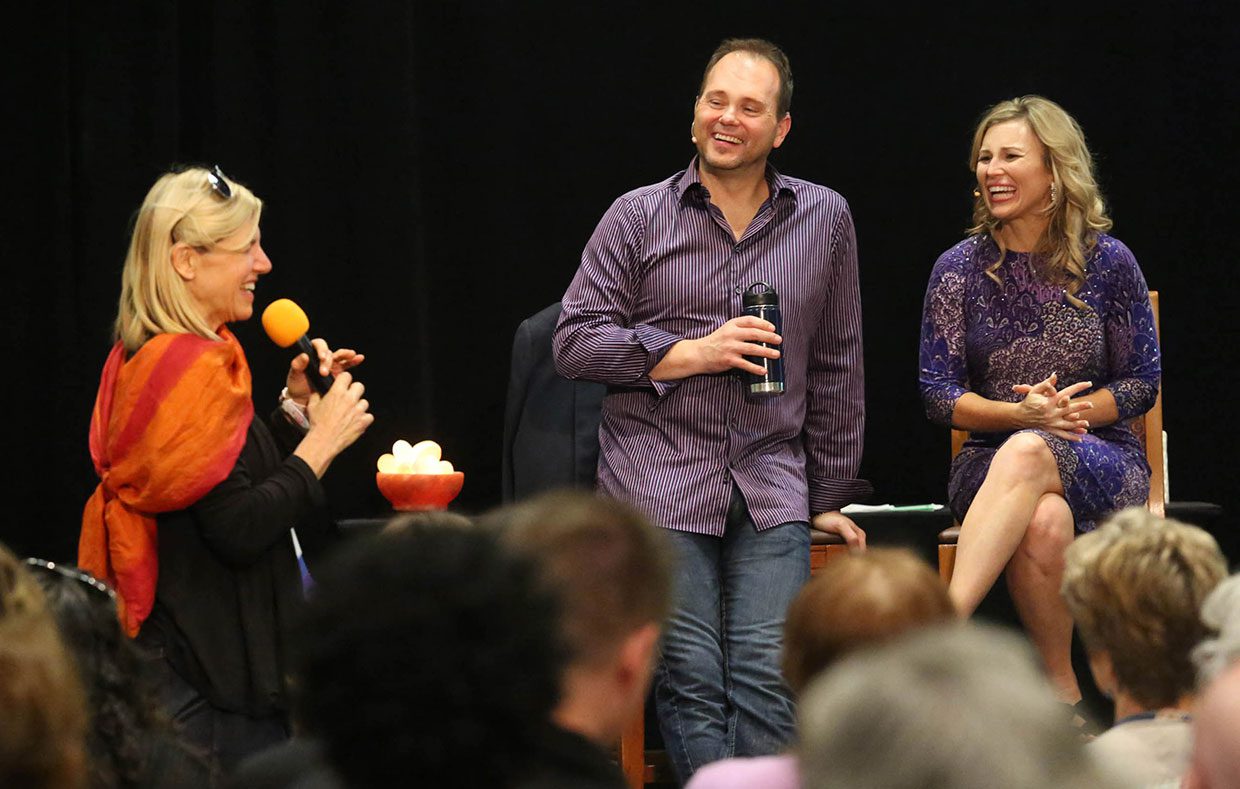Speaking is the new marketing.
Meaning, the only way to increase the impact your message has is by speaking.
So what do you say once you’re on stage?
How do you get ready?
How do you align your message with your ‘tribe’ in a way where they are energetically drawn to you?
At a time when everyone is busy running ads online and posting on social media, not many people are taking the time to literally speak to their audience.
In fact, many people actively shy away from approaching their target in person, much less speaking on stage in front of them.
This is a pity because speaking is one of the most efficient — and effective — ways to get your message across.
Speaking allows you to humanize your brand too. Everything from your appearance, personality, and quirks give your brand a human face that many brands are lacking.
And the great news? Anyone can learn how to develop stage presence when performing on stage.
Shannon here with a DEEP truth on how to rock your talk.

How To Speak Confidently When On Stage
The big secret to confidently speaking to a crowd is developing your stage presence. This is, so that you can set the tone of the evening and the audience can step into a world you have crafted.
If you suffer from low confidence or shyness, then it’s easy to come to the conclusion that stage presence and confidence are things that you’re either born with or not. But that’s simply not true.
Anyone can learn how to show stage presence and speak with confidence.
By developing your natural speaking and performance skills, you can increase your confidence and improve your stage presence without having to adopt an on-stage persona or pretend to be someone you’re not.
It may seem cliché, but staying true to yourself really is the best way to feel confident on stage. That means highlighting your strengths and building your performance around them.
For example, if you have a great sense of humor, then sprinkling some jokes here and there will help you feel more at ease on stage.
Showing stage presence and confidence starts with feeling comfortable on stage and staying true to your signature energy and charm is a good place to start.
What is Stage Presence?
Stage presence is a performer’s ability to capture an audience’s attention and sustain it for the duration of a show, talk, or presentation. It is determined by a combination of the performer’s skills, confidence, mannerisms, dress, and overall star power or allure.

How To Have Stage Presence: 10 Tips For Instant Results
Ever wondered how to have stage presence? This is the guide for you.
Believe it or not, having a great speech ready isn’t enough to capture your audience’s attention. Your delivery is just as important.
There are certain nonverbal cues that can add to or take away from your stage presence: your mannerisms, gestures, posture, stance, and appearance all contribute toward your appeal on stage.
Ready to up your game? Let BigImpactHQ™ be your guide. Read on for 10 stage presence tips!

1. Identify Your Speaking Style
Every performer has a unique speaking style. Do you know yours?
There are various categories of speaking styles and your personality, and speaking goals are just a few of the factors that determine which one you fall into.
If you’re trying to force a style which doesn’t align with your personality, you’re setting yourself up for failure.
Your speaking style should be informed by a combination of your personality, message, and of course, the nature of the event itself.
If you haven’t had much experience speaking on stage, or are an experienced speaker looking for ways to display commanding stage presence, the key to a better performance is finding the perfect speaking style.
Take our speaker quiz to learn more about speaking styles and how to identify yours.

2. Research Your Audience/Crowd
An aspiring comedian who is performing on stage, breezes through all their best bits, but can’t get a single laugh out of the crowd. You’re familiar with that trope, aren’t you?
While the media may lead you to believe otherwise, the truth is that there is no such thing as a “tough crowd”. The difference between a successful performance and a performance that falls flat is research.
Knowing your audience is the single most important thing you can do before you even think about writing your speech.
That means paying attention to your demographic. Age, gender, ethnicity, education level, income, and location are all factors that will influence how your speech is received.
For example, a younger audience would probably be more receptive to a joke about student debt than one about managing the new office intern.
Think about the difference between your language and tone when you speak to your closest friend and when you speak to an employer or a potential investor.
The bottom line? A little cultural sensitivity can go a long way.

3. Believe in Your Speech Content
Conviction breeds confidence.
You can say all the right words, but if you don’t believe in them, they just aren’t going to have the impact you’re hoping for.
Believing in what you’re saying imbues every word of your speech with confidence. If you believe in your own ideas, the crowd is more likely to believe in them — and in you — too.
BUT choose your words carefully.
Speaking confidently also means using self-assured language. Avoid prefacing your opinion with words and phrases like “I think”, “maybe”, and “um”.
Regardless of the merits of your arguments, using words that express uncertainty or hesitation is a sure way to undo all of the efforts you already put into your speech.
Conviction is about what you believe as much as it is about how you communicate it.
4. Build Trust By Sharing Your Personal Experience
 Personal anecdotes are the easiest way to build a connection with the crowd.
Personal anecdotes are the easiest way to build a connection with the crowd.
Sharing your personal experiences with the audience sets off a chain reaction that helps you get your message across.
When you showcase vulnerability by giving insight into your lived experiences, you establish a bond between yourself and your listeners.
And people are far more likely to pay attention to someone they feel connected to or feel like they know rather than a total stranger.
Framing your personal anecdotes in a way that everyone can relate to is especially effective in stirring up emotion in your audience and making a lasting impression.
For example, a bit about losing your job could easily be turned into a conversation about moving forward after rejection.
That way, your audience can easily apply your anecdote to their personal experiences with rejection too — including everything from their dating lives to college applications.
5. Have Backup Content Prepared In Case Of Stage Fright
 No one — not even the most experienced speaker — is immune from stage fright.
No one — not even the most experienced speaker — is immune from stage fright.
It’s absolutely normal to feel some anxiety or panic before or during a performance.
In fact, stage fright isn’t just exclusive to stages. Performance anxiety can strike before a test or exam, meeting or interview, game or match.
The National Institute of Mental Health (NIMH) estimates that around 73% of people suffer from some form of stage fright.
Even if you’ve performed before without a hitch, it’s generally good practice to have backup content in case something goes wrong.
Whether you forget sections of your speech, freeze up, or have an unexpected change of plans during the event, having backup content can pressure you to memorize your content or improvise.
Taking a full written speech with you, preparing some cue cards, or designing a couple of visuals to emphasize your key points can help you keep your nerves in check and the show going.
Remember that you don’t have to memorize your backup content. Overloading your brain will only complicate your performance and make you more anxious.

6. Fix Your Body Language
Confident body language is one of the best ways to improve your stage presence.
Your body language communicates something to your audience before you utter a single word.
For example, nervous ticks or fidgeting around will distract the audience from the merits of your speech and make you seem less self-assured.
Your friends and family can probably give you some insight into the speaking habits, mannerisms, or gestures that they ordinarily find distracting.
Aim to address these issues well before your performance to get them out of your system. The last thing you want to be thinking about when you’re on stage is your posture.
So, what are some simple ways to improve your posture?
Practice sitting up straight and standing erect in your day-to-day life and avoid the temptation to lean against walls and counters. Keep your shoulders back and down, elongate your neck and put your chin up.
Pay attention to your arms and hands when you’re speaking to someone. Slow movements will translate as calm and confident body language.
7. Dress to Impress
 People absolutely judge books by their covers. It’s just a fact of life.
People absolutely judge books by their covers. It’s just a fact of life.
How you choose to present yourself to the world speaks volumes about your personality and confidence.
People will always draw inferences about you from your choice of clothing. — especially when they don’t know you personally.
Your audience will use whatever information is made available to them about you to paint a picture of who you are in their minds.
If your dress sense doesn’t accurately portray who you are — or who you want to be — then you’ll spend the rest of your performance working to erase the image the audience already has of you and rebuilding it.
However, dressing to impress doesn’t mean that you have to be in a cocktail dress and heels or suit and tie every time you perform. Your attire must be appropriate to the occasion. Depending on the context, jeans and a t-shirt may be appropriate.
Being overdressed is just as bad as being underdressed.
Dressing well will help you stand out and attract more attention to you when you speak.

8. Watch Your Performance Back To Identify Any Weaknesses
It should go without saying, but the first time you say your speech out loud shouldn’t be during your performance.
That advice goes for watching your performance too. There’s nothing quite like watching your performance after the fact and feeling like deleting your social media accounts and moving into a cabin in the woods.
Recording yourself while you practice will help you identify your weaknesses from the perspective of your audience. Better yet, ask a friend to watch your performance beforehand and give you some feedback.
Of course, watching yourself after the final performance is just as important. Performing in front of a crowd is very different from rehearing in front of your bathroom mirror.
Pressure, excitement, and nerves will all influence your final performance in ways you may not anticipate.
Pay special attention to how the crowd responds to you throughout the course of your performance. Even if you knocked it out of the park, always ask yourself how you can improve your audience’s experience next time.

9. Walk The Full Stage And Give The Whole Crowd Attention
If you’ve never watched a tennis match, search for a clip online and watch the players in action for a minute or two.
Notice how you keep your eye on the ball the entire time? Notice how the crowd moves their heads from side to side as they follow the ball?
That’s the same effect you want to have with your audience when you’re up on stage. People naturally notice movement and walking across the stage helps keep your audience’s attention.
It’s difficult to keep the crowd engaged if you are standing in one spot the whole time.
The longer the speech, the larger the stage, or the bigger the audience — the more important it is to keep things engaging by providing some visual stimulation.
As much as you may strive to win the attention of the crowd, however, performing is a give and take, and it’s important to give the crowd some attention too to foster a sense of community.
Make eye contact with individuals in different sections of the audience. When people feel seen, they will feel as though your speech is directed at them and will take a greater interest in your performance.

10. Involve The Audience Wherever Possible
Involving the audience during your performance keeps things from getting stale.
Simple things like speaking in the second person — using pronouns such as “you”, “your”, and “yours” — makes the audience feel like they are part of a conversation.
You can take things a little further by triggering the audience’s imagination or asking them questions.
Simple “yes” or “no” questions or questions that can be answered by a show of hands are a popular way to involve the audience.
If you are uncomfortable interacting directly with an audience member or are on a strict time limit, there’s no harm in keeping your questions rhetorical.

Stage Presence Examples
While the top performers tend to have enviable stage presence, they also have a way of making their performances look and sound effortless.
They typically employ a conversational tone to make sure their speech is easy to follow and understand and that can reach as many people as possible.
Felecia Hatcher
An award-winning motivational speaker, author, and entrepreneur Felecia that has been lauded for her ability to mobilize people to change their lives.
Adept at relating to her audience members, her talks are as impactful as they are inspiring.
Great motivational speakers are people that get you to want to change your life for the better. If your audience walks out of your speech feeling inspired to turn things around, then you’ve done your job.
That’s the kind of effect Felecia has on her audience.
Whether she’s speaking on female empowerment or tech and entrepreneurship, Felecia gives you the kind of pep talk and insight that you wish you could receive from your best friend every day.
Susan Robinson
If you’d like your sense of humor to shine through, then you may want to take a page out of Susan’s book.
Susan has a disarming charm that endears her to her audience. Her speeches are laden with personal anecdotes and cover deeply personal topics such as her visual impairment.
Giving her audience access to her personal struggles and successes alike establishes a connection between herself and her audience.
However, Susan’s experiences with disability don’t just resonate with those that share similar struggles. Susan tactfully frames her life experiences in such a way that anyone can relate to them.
Getting out of your own way, subverting expectations, and overcoming adversity are just a few of the topics that Susan uses to reach a diverse audience all the while raising awareness for the disabled.
Maya Angelou
This famed poet and civil rights activist is one of the most prolific speakers in history. In fact, you’d be hard-pressed to find someone who isn’t familiar with her work.
Maya had a way of moving people with her words. Her carefully-worded, impassioned speeches have birthed dozens of highly shareable, quotable lines the world over.
Her slow pace, methodical pauses, and impressive projection never fail to stir the crowd.
When you’re working on your presentation, it’s a good idea to study some of your favorite speakers and musicians. Dissect one of their best performances and write down what you enjoyed about it.
Better yet, compare one of the speaker’s earlier performances to their more recent ones to see how their skill and stage presence has developed over time.

Conclusion
It may seem daunting at first, but public speaking really does get easier with a little time and practice.
By using our 10 stage presence tips and tricks, you can develop the skills you need to step up your performance.
Take the first step to speaking confidently on stage by taking our quiz to find the speaker style that will work best for you.
In your corner and by your side,
Mark and Shannon


